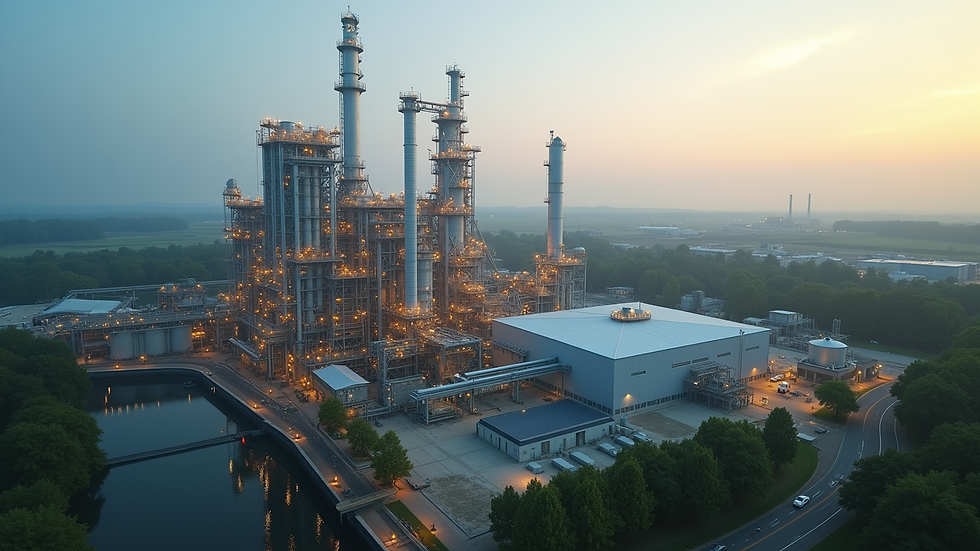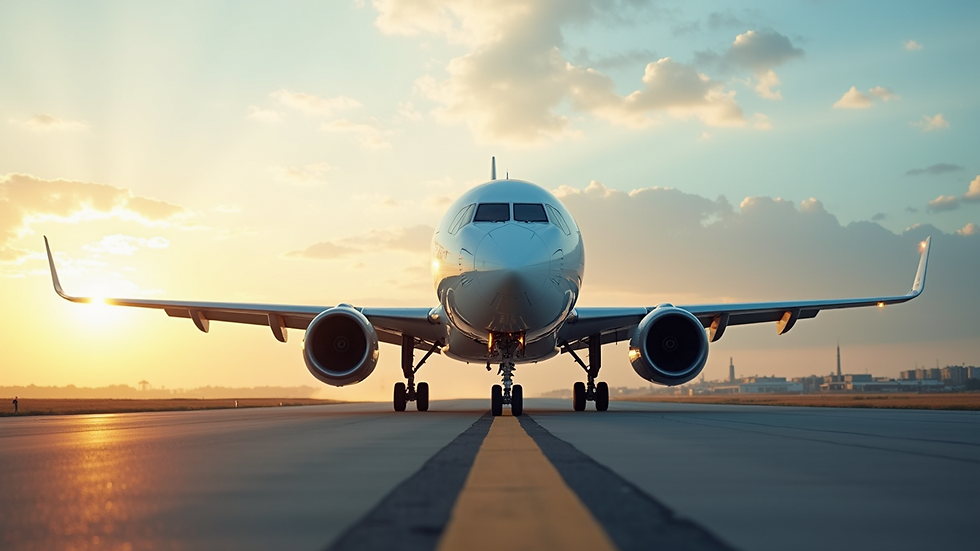Airlines Stand Firm on Net-Zero Emissions Commitment Amid SAF Production Challenges
- looloowiththejuice
- Jun 3
- 4 min read
The aviation industry is at a critical turning point as it strives to balance operational goals with environmental responsibility. The International Air Transport Association (IATA) has reaffirmed its pledge to achieve net-zero carbon emissions by 2050, despite growing concerns about sustainable aviation fuel (SAF) production challenges and its costs. This goal is ambitious, requiring an estimated $4.7 trillion in investments and may lead to potential changes in ticket prices.
Airlines are now intensifying their calls to energy providers and aircraft manufacturers to proactively expand SAF production and accelerate the development of fuel-efficient aircraft. This cooperative effort is crucial for making net-zero a reality.
The Role of Sustainable Aviation Fuel (SAF)
Sustainable aviation fuel (SAF) is central to the industry's quest for net-zero emissions. Unlike traditional jet fuel, SAF is derived from renewable materials such as agricultural waste, cooking oil, and even carbon captured from the air. Studies show that SAF can reduce lifecycle greenhouse gas emissions by up to 80% compared to conventional jet fuel.

However, significant obstacles exist. Currently, demand for SAF exceeds supply by roughly 300%, as many airlines are grappling with limited availability and high production costs. For example, the cost of SAF can be two to four times higher than regular jet fuel, complicating the transition for airlines.
Economic Implications for Airlines and Passengers
To meet the ambitious net-zero carbon emissions target, a substantial financial investment is essential. The IATA estimates that achieving net-zero will require approximately $4.7 trillion by 2050. This investment will cover SAF production, the development of innovative technologies, and the introduction of more efficient aircraft.
This financial burden may have direct implications for ticket prices. Airlines face the dilemma of whether to pass these costs onto consumers or absorb them, balancing operational costs with the need to stay competitive. A survey revealed that over 60% of travelers prefer airlines that prioritize sustainability, suggesting that a commitment to environmental responsibility may be essential for attracting customers.
Airline leaders stress that the path toward sustainability is not just a choice; it is a necessity for long-term viability in a changing market.
Calls for Increased SAF Production
In response to these challenges, airlines are calling on energy companies to accelerate the production of sustainable fuel. Current SAF production levels are insufficient to meet the growing demands of the aviation sector. In fact, the industry must boost SAF production by at least 60% annually to meet future targets.
Collaboration is key. Airlines can enhance their partnerships with fuel suppliers to create a stronger framework for scaling SAF production. Increased investments in research and development, government incentives, and prioritizing sustainable practices in fuel sourcing can catalyze this transition.

Realizing the full potential of SAF may set a benchmark for energy transitions across various sectors, encouraging widespread adoption of sustainable practices.
Advancing Fuel-Efficient Aircraft
In addition to increasing SAF production, airlines are also advocating for faster delivery of more fuel-efficient aircraft. The integration of cutting-edge technologies and design enhancements can significantly lower carbon emissions and fuel consumption. According to estimates, new aircraft can be up to 20% more fuel-efficient than older models.
Aircraft manufacturers face pressure to innovate more quickly. Strong collaboration between airlines and manufacturers can accelerate the development of next-generation aircraft that utilize advancements in fuel efficiency and energy management. As the passenger base grows, so do the expectations for greener travel options.
Investing in modern fleet technologies may require significant upfront costs, but the long-term benefits for airlines, passengers, and the environment are compelling.

The Path Forward
As the aviation industry moves ahead, sustaining a commitment to environmental practices amid challenges will demand perseverance. Airlines must balance operational efficiency, profitability, and ecological responsibility through a multifaceted approach.
Incorporating sustainable aviation fuel while upgrading fleets with more efficient aircraft are vital steps in this process. However, open dialogue among all stakeholders is necessary to find solutions for overcoming existing barriers in SAF production and technological advancements.
Though the road to 2050 is challenging, airlines are poised to demonstrate leadership in environmental stewardship. By championing innovative solutions and promoting sustainable practices throughout their operations, they can inspire other industries to embrace similar principles.
A Sustainable Future on the Horizon
The aviation industry's ambition to reach net-zero carbon emissions by 2050 highlights a significant shift towards sustainability. Although the challenges of SAF production and operational expenses loom large, airlines remain steadfast in their mission to partner environmental responsibility with consumer expectations.
By enhancing SAF production capabilities and accelerating the development of efficient aircraft, the industry can move closer to a greener future. The collective commitment of airlines, energy companies, and aircraft manufacturers will be crucial in realizing the vision of carbon-neutral aviation.
With continued focus on innovation and sustainability, the aviation sector can set the stage for a cleaner planet for future generations. The journey to achieve net-zero emissions may be complex, but clear pathways and determined efforts can help navigate this vital transition.



